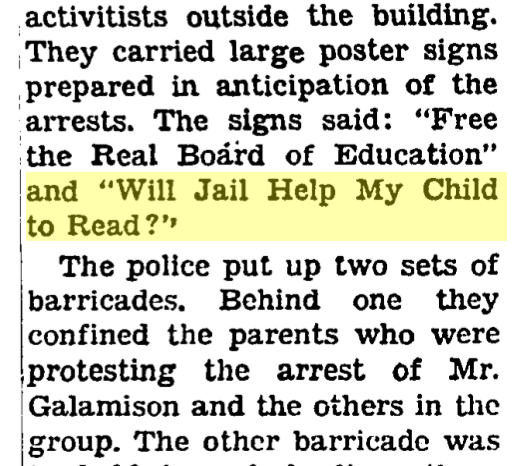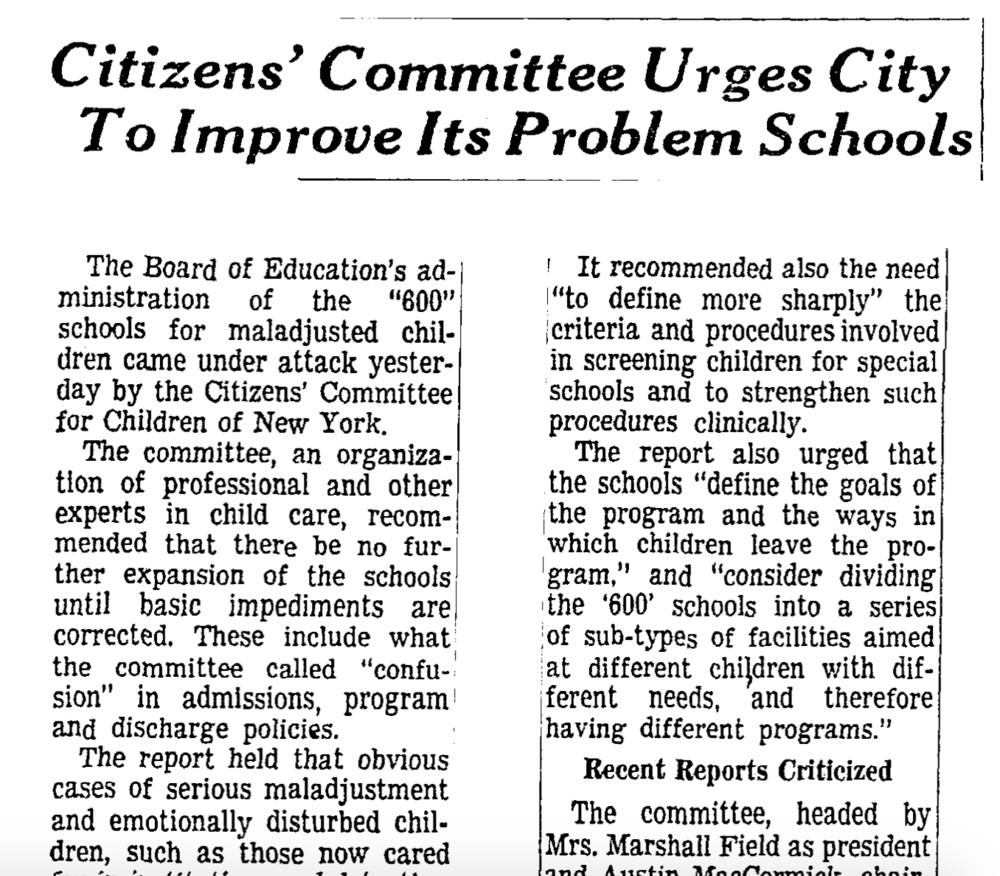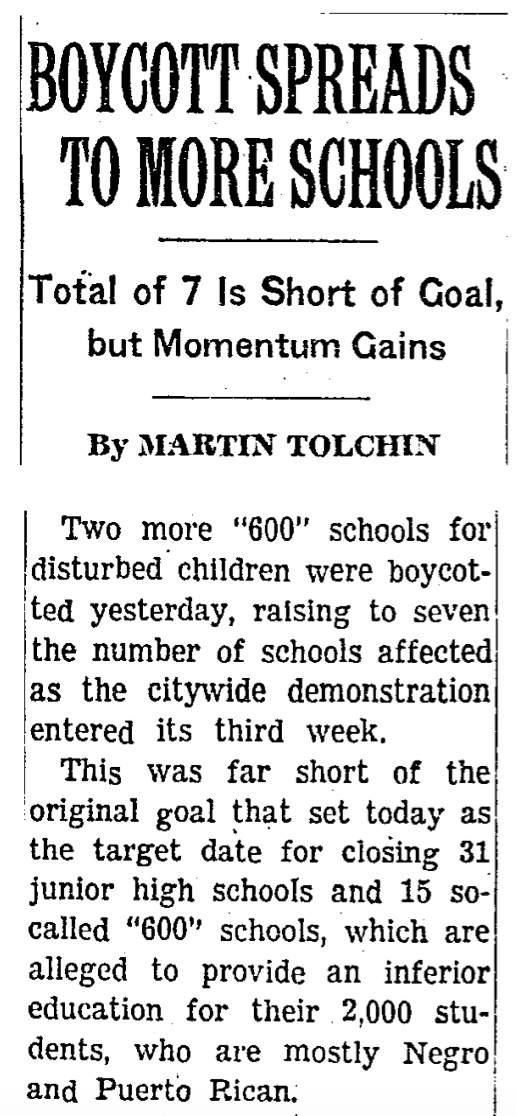Restorative Justice
Operation Shutdown and Parkland Shooting
Even after nearly half a million students boycotted New York City schools in 1964 demanding integration (see Race & Enrollment Teach-in), the Board of Education still refused to put forth any serious plan to integrate the city’s schools. Parents, students, and activists were growing frustrated and disagreed about tactics for moving forward. Reverend Milton Galamison, the leader of the Citywide Commission for Integrated Schools, thought the movement could regain momentum by appealing to the students and parents who were most neglected by the school system, those served by the city’s so-called “600 schools.”
“600 schools” were designed for students who allegedly could not be educated in traditional classrooms because of emotional or behavioral issues. Parents argued that these schools were improperly screened; for example in one school only 30% of the students had documented mental health conditions, while the remaining 70% had merely been suspended or were on probation. The students in these schools were disproportionately African American and Latino and often ended up pushed out of school or in prison. This is what we now call the “school to prison pipeline.”
Black male teachers were generally assigned to run the “600 schools,” but they were not given the official title or salary of a principal. This prevented them from rising up the professional ladder. So Black students and teachers were cast aside in these highly segregated schools where they had limited opportunities to learn or grow.
In 1965 Reverend Galamison organized “Operation Shutdown.” For six weeks, from January 19th to March 10th, students boycotted “600 schools” across the city. The protests were not nearly as large or well-publicized as the 1964 boycott, but they gave thousands of students who were normally considered “maladjusted” or “disturbed” a voice and belief in their right to a better education. They brought increased attention to the discriminatory disciplinary and classification policies that placed students in alternative schools.
Historically and presently we have failed students and struggled to put systems and restorative practices in place in order to disrupt the criminalization of youth and specifically youth of color.
More recently in Parkland Florida a mass shooting occurred at Stoneman Douglas High School. In response to this, some people called for more metal detectors in schools and arming teachers with guns to prevent another tragedy like this. Metal detectors have done more harm than good by criminalizing students of color ever since they’ve been implemented. Students are put in harm's way by arming teachers instead of training teachers in restorative justice practices that benefit students.
We stand against the criminalization of students and are moved to give all young people an environment that they can thrive in. Join us in the fight to give students what they deserve. #StillNotEqual
ADDITIONAL RESOURCES
https://janos.nyc/history/today-in-nyc-history/february-3-largest-boycott-in-public-school-history-to-fight-segregation-1964/
http://observer.com/2018/03/metal-detectors-nyc-public-schools/





